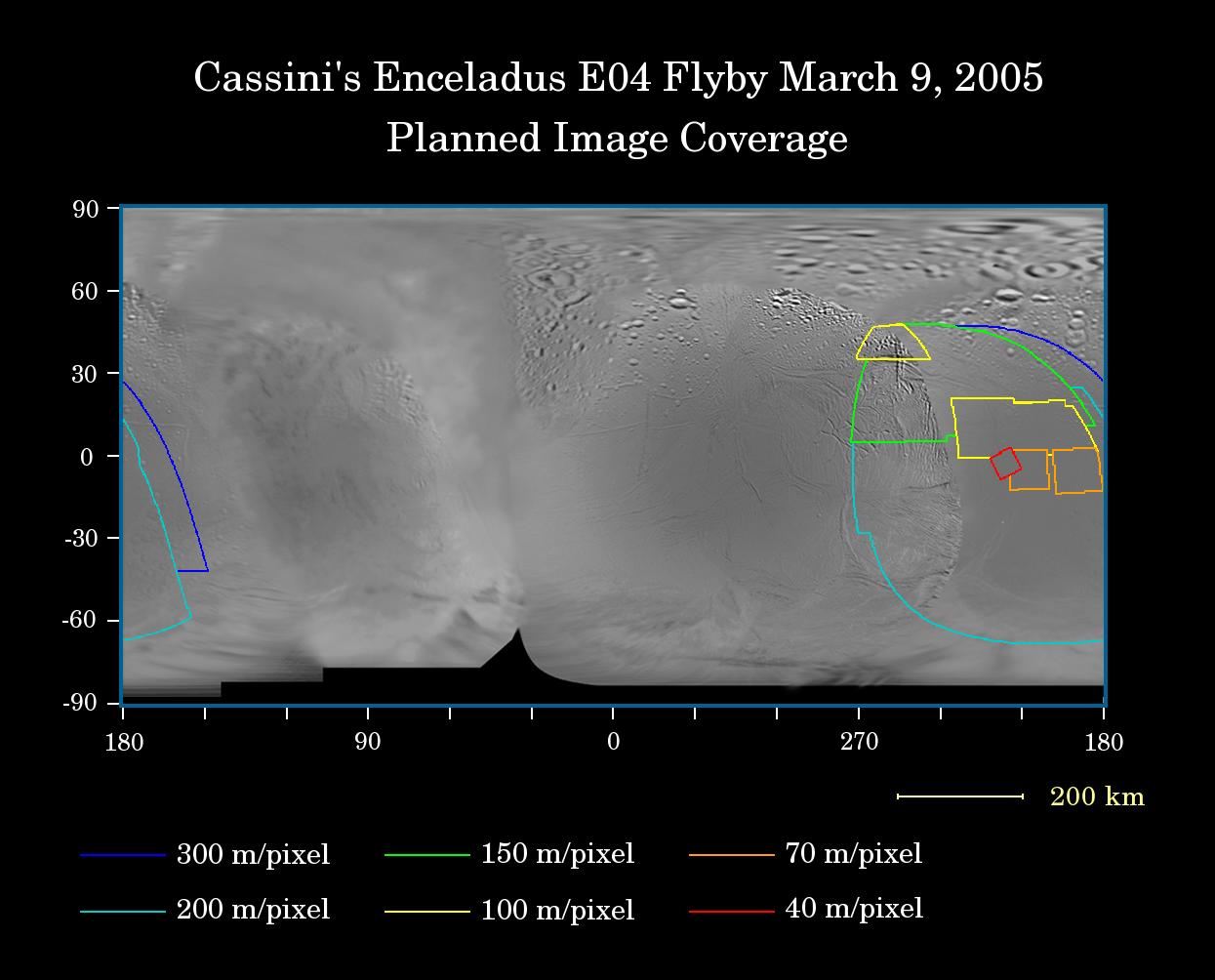Cassini’s Closest Enceladus Flyby

| PIA Number | PIA06205 |
|---|---|
| Language |
|
This map of the surface of Saturn's moon Enceladus illustrates the regions that will be imaged by the Cassini spacecraft's second very close flyby on March 9, 2005. At closest approach, the spacecraft is expected to pass approximately 500 kilometers (310 miles) above the moon's surface. This is Cassini's closest planned approach to Enceladus during the four-year primary mission. Enceladus is 505 kilometers (314 miles) across.
The colored lines delineate the regions that will be imaged at differing resolutions, listed in the legend at the bottom.
The new high-resolution coverage will reveal details on the anti-Saturn facing hemisphere of Enceladus, which is the transition region between the moon's leading and trailing hemispheres.
A high-resolution mosaic was produced following Cassini's previous close Enceladus flyby, which occurred on Feb. 17, 2005. The mosaic showed areas that appeared to be relatively smooth in images from NASA's Voyager spacecraft actually are heavily wrinkled and fractured.
The map was made from images obtained by both the Cassini and Voyager spacecraft. The Cassini images used here include data acquired during the previous flyby on Feb. 17, 2005.
The Cassini-Huygens mission is a cooperative project of NASA, the European Space Agency and the Italian Space Agency. The Jet Propulsion Laboratory, a division of the California Institute of Technology in Pasadena, manages the mission for NASA's Science Mission Directorate, Washington, D.C. The Cassini orbiter and its two onboard cameras were designed, developed and assembled at JPL. The imaging team is based at the Space Science Institute, Boulder, Colo.
For more information about the Cassini-Huygens mission visit http://saturn.jpl.nasa.gov . For additional images visit the Cassini imaging team homepage http://ciclops.org .
Credit: NASA/JPL/Space Science Institute
